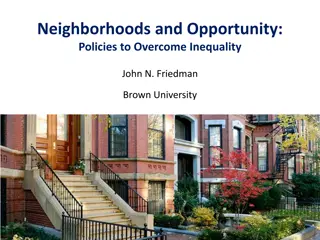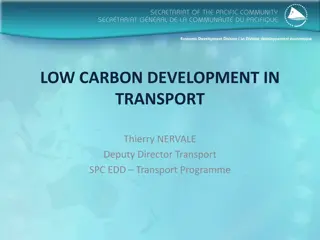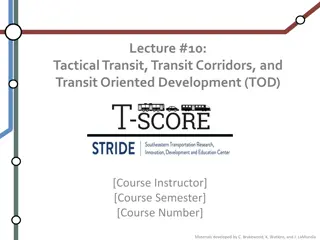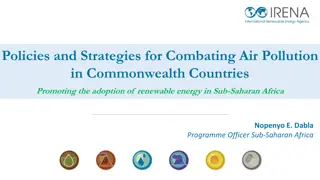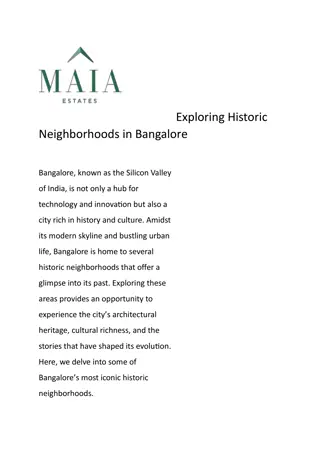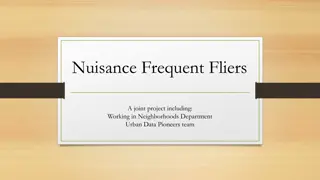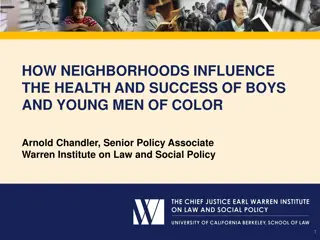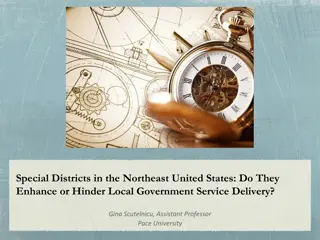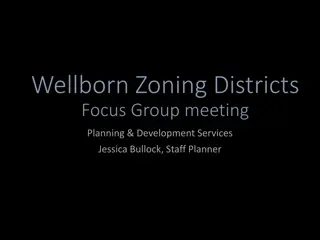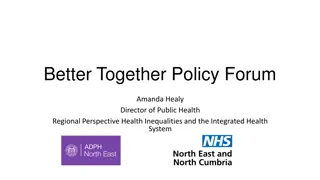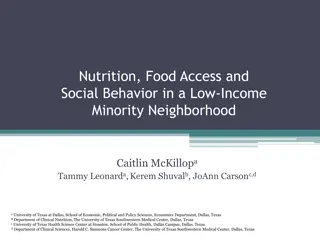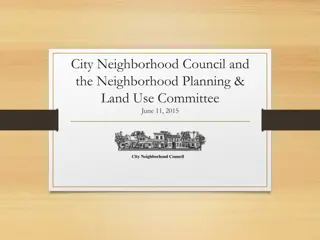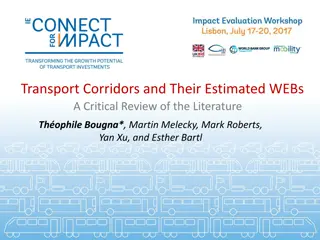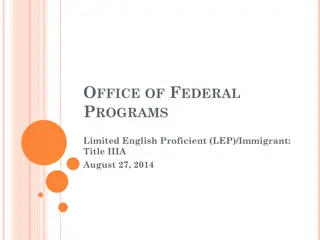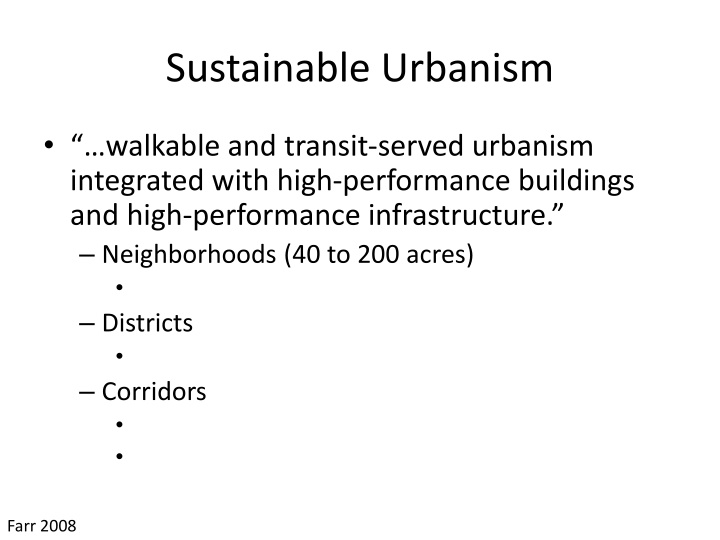
Sustainable Urbanism - Integrated Neighborhoods, Districts, and Corridors
Sustainable urbanism emphasizes walkable and transit-served urban environments integrated with high-performance buildings and infrastructure. The concept focuses on creating neighborhoods, districts, and corridors ranging from 40 to 200 acres in size, promoting a sense of community, responsible maintenance, local stormwater management, and finite social networks. By combining compactness, density, and connectivity, sustainable urbanism aims to meet daily and lifetime needs while supporting various modes of transportation and reducing overall costs. Embracing biophilia and high-performance infrastructure, this approach seeks to preserve natural spaces, enhance efficiency, and minimize environmental impact.
Download Presentation

Please find below an Image/Link to download the presentation.
The content on the website is provided AS IS for your information and personal use only. It may not be sold, licensed, or shared on other websites without obtaining consent from the author. If you encounter any issues during the download, it is possible that the publisher has removed the file from their server.
You are allowed to download the files provided on this website for personal or commercial use, subject to the condition that they are used lawfully. All files are the property of their respective owners.
The content on the website is provided AS IS for your information and personal use only. It may not be sold, licensed, or shared on other websites without obtaining consent from the author.
E N D
Presentation Transcript
Sustainable Urbanism walkable and transit-served urbanism integrated with high-performance buildings and high-performance infrastructure. Neighborhoods (40 to 200 acres) Districts Corridors Farr 2008
Neighborhoods Farr 2008 bettercities.net
Defined Center & Edge Center Market Edge / Boundary Sense of responsibility Maintenance Local stormwater management Finite social network - Get recognized, meet friends on street Farr 2008
slanich.zenfolio.com (Gothenburg, Sweden) Compactness Walkable yet enough people to support transit 40 to 200 acres Density supports Density protects Farr 2008 streetsblog.net (Cincinnati, Over-the-Rhine)
Pitman, NJ 3,571 Housing Units 1,471 Acres
Collingswood, NJ 6,639 housing units in 1.923 mi2 =
Completeness Daily Needs Collingswood NJ, very walkable, www.walkscore.com, 2013 Lifetime Needs Goal Farr 2008
Connectedness - Internal Walk, bike, wheelchair, drive opportunities Streets 25-30 mph speed limits Farr 2008 lawprofessors.typepad.com
Connectedness - Corridors Link neighborhoods with districts, etc. Public Transit must be Utility Integration w/ Public Transit Farr 2008 blog.tstc.org, 2009
Biophilia Connect w/nature Make natural resource flows visible Feedback on our effects Support nonhuman species located near human communities Farr 2008 sphotos-a.xx.fbcdn.net
www.ercshowcase.com High Performance Infrastructure Goals Reduce Overall Costs Preserve Natural Spaces High Density Neighborhoods Shorter distances - utilities, roads, More efficient public transit Examples Reduce Urban Heat Island Effect Stormwater Filtration Recycled & Local Content Long Lasting Road Surfaces District Heating & Cooling Farr 2008 www.internationalwastewater.com
High Performance Buildings LEEDS 25 30 % more energy efficient Reductions per capita, NOT per square foot Multi-family dwellings inherently more efficient Marshall Space Flight Center NASA Solar power parking lot lights, Auto dimming / Light harvesting this building meets silver level requirements for Leeds building standards. Farr 2008 www.jessestuttsinc.com
Integrated Design Neighborhood as system More efficient buildings, smaller utility system More public transit, fewer parking spaces needed Street grid means fewer miles driven Building as system Improve envelope and reduce HVAC needs Farr 2008
Connectedness High Performance Infrastructure Biophilia
3 steps to Sustainable Urbanism Weights and Measures (Standards) Oil-Era Barriers National Campaign Farr 2008
Weights and Measures Pent up demand for Sustainable Urbanism can take off when recognizable standards are introduced LEED for Neighborhood Development Where Location (infill or redevelopment) What goes on Mixed Use, Compact Development How it is built and managed High Performance Farr 2008
Oil-Era barriers Zoning & Land-use Regulations Separate residential retail commercial zones Minimum (large) school parcel size Big box retailers Roadway Design Standards Encourage high speed long distance roads Incomplete Environmental Regulations Climate change and more Farr 2008
National Campaign Better Technologies & Sustainable Urbanism Technologies can be replaced over a decade Changes in land use take longer to implement Sell Sustainable Urbanism as an increase in quality of life, with benefits: Economic Health Environmental Leadership, Training & Model Projects Farr 2008
Francis, M. (2002) Village Homes: A Case Study In Community Design, Landscape Journal 21:1-02 Davis, CA Village Homes 1974, 60 acres Michael and Judy Corbett 220 single family homes, 20 apartments, cooperative house Solar design features and solar hot water Community Focus Community center and common areas Shared ownership of common areas Community fruit and nut trees and vineyards, Bicycling and walking orientation www.ecocomposite.org
Francis, M. (2002) Village Homes: A Case Study In Community Design, Landscape Journal 21:1-02 Davis, CA Study Village Home resident knows 42 people in neighborhood (17 in control) identifies 4 of best friends in Village Homes (0.4 in control) Virtually no crime Density almost 2x surrounding areas Quality of life much higher Increased home value & quicker home sales
Sustainable Urbanism Pillars Defined Center & Edge Compactness Completeness Connectedness Biophilia Population Technology Life Style Environment High Performance Buildings & Infrastructure


